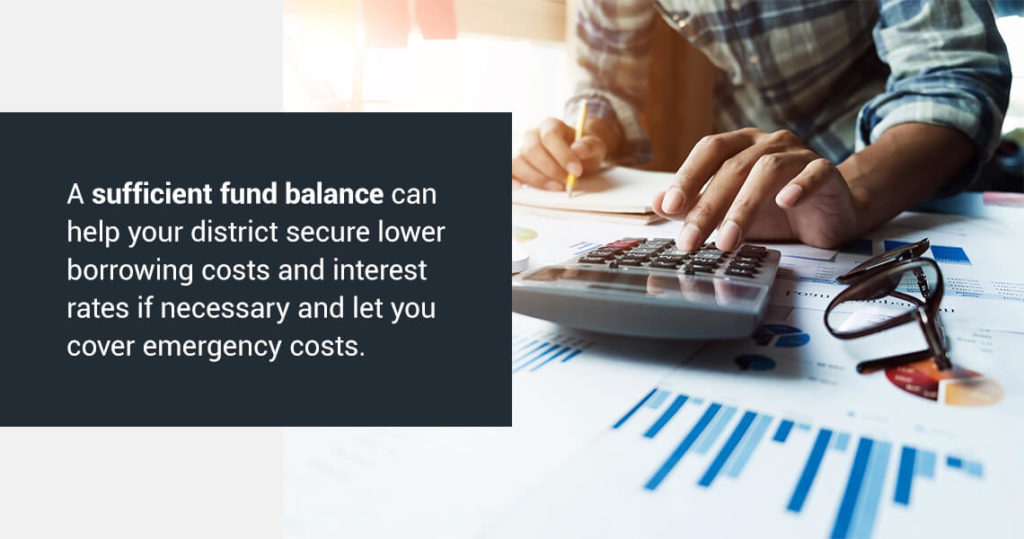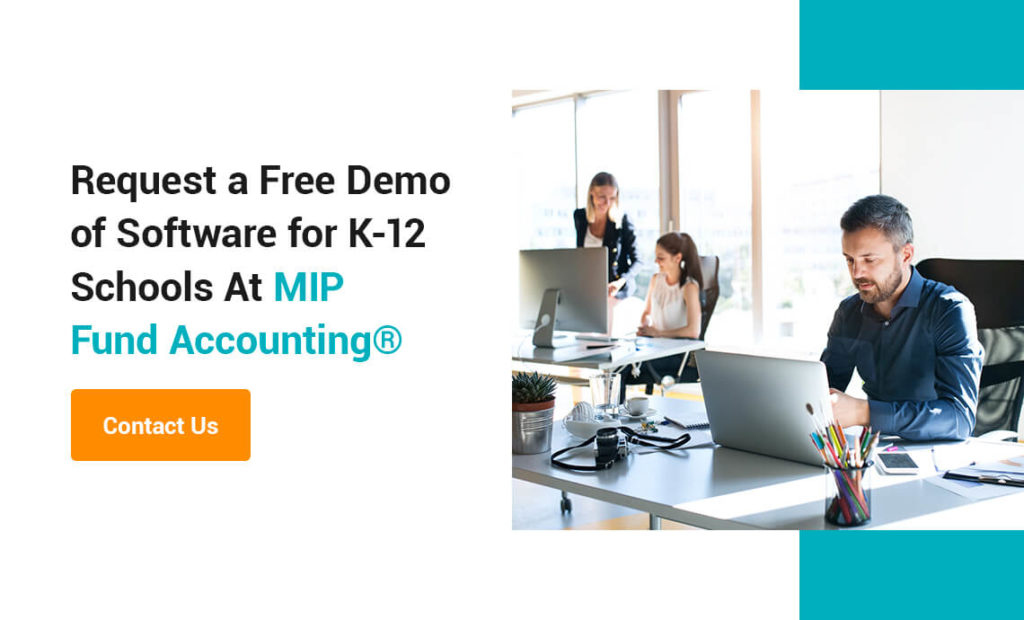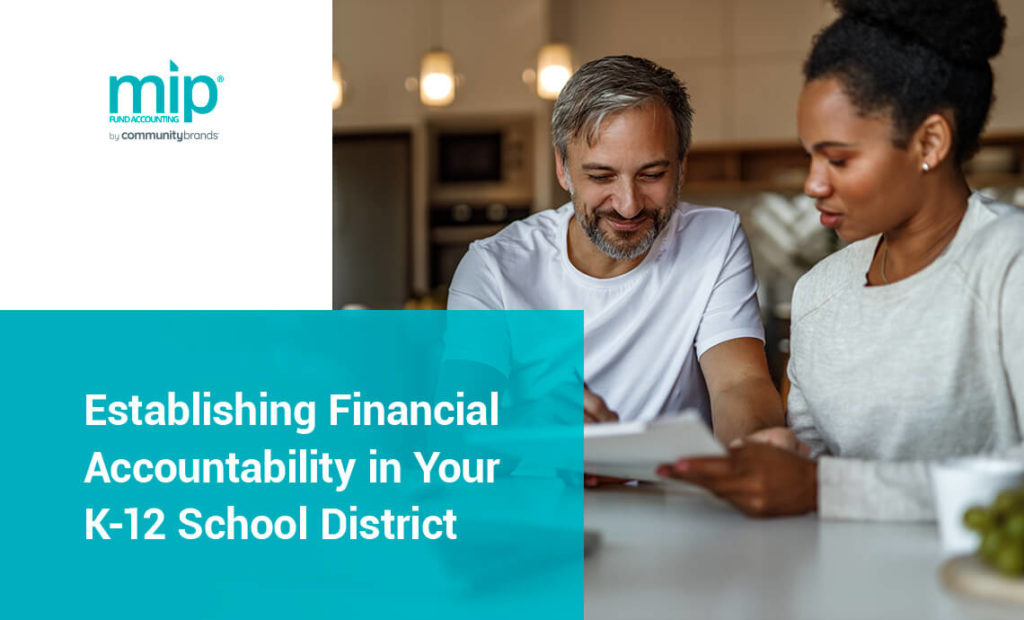Reading Time: 5 minutes
Establishing financial accountability through budgeting is an essential part of K-12 school district accounting.
Think of your school budget as a financial plan to help you achieve institutional objectives. A successful budget should include an expenditure framework, revenue plan, and educational strategy. These factors will help you take appropriate actions according to the financial plan while aligning your actual performance with your budget.
The best way to establish financial accountability for your institution is with accounting software designed specifically for K-12 schools and universities.
Problems With Financial Accounting for Schools
You may find yourself encountering some of these common issues when it comes to budgeting and financial accounting for local and state school systems.
Too Many Methods
The larger and more complex a school district is, the more complicated developing and managing a budget can become. This complexity often stems from various departments in a district handling their budgeting needs differently. While some departments may utilize spreadsheets, other departments might manage their spending via direct communication with the central office.
Unifying the budgeting processes across every department is one of the first steps to establishing financial accountability in a school. Each department’s end users should be able to review and understand the budget’s inner workings.
Fear of Budgeting
You may have to dispel the myth that budgets are difficult to understand or too challenging to create. A school budget is simply an itemization of all your estimated revenue and anticipated expenses during a certain period of time. In other words, your district has a certain amount of money to pay bills and purchase items, and a budget is a financial plan to track everything and accomplish your goals.
Encouraging staff to think about their district budget as a home budget can help them understand that the underlying principles are the same. You may also want to facilitate opportunities for staff members who need help making sense of the budget to meet with someone from the budgeting department. One-on-one meetings with different departments can significantly aid your staff and district in taking on greater financial accountability.
6 Questions to Help Develop Your Budget
Before taking your district budget to the school board for approval, consider the following questions to ensure you’re focusing on the big picture:

1. What Is Your Current Fund Balance?
While your fund balance can fluctuate significantly throughout the year, it serves as a reliable measure of the district’s financial health. A sufficient fund balance can help your district secure lower borrowing costs and interest rates if necessary and let you cover emergency costs.
Fund balances can fall into a few categories, including restricted, nonspendable, assigned, committed, and unassigned. You can find your fund balance by subtracting your liabilities, or the amount you owe, from the total value of your assets. Fund balance assets include inventories, investments, accounts receivable, and delinquent taxes.
When you know your current fund balance, you can also track the trend of your balance over the past few years.
2. How Long Will Your Current Fund Balance Last?
Ideally, you should maintain a fund balance that can cover a few months’ worth of expenses.
Your district may have listed its ideal fund balance in its fund balance policy. However, it’s also common for districts to create a deficit budget that uses money from the fund balance. While a deficit budget can be okay in the short term, it’s not a sustainable, long-term option.
3. Does Your Budget Reflect the Needs of Your Facilities?
Consider whether you will need to cover significant facility expenses such as major maintenance, renovations, new construction, and energy improvements.
4. What Are Your District’s Current Staffing Ratio and Recent Trends?
Staff salaries are a significant portion of your district’s budget. Those salaries are important to consider, especially in relation to enrollment rates. For example, a rise in full-time equivalents without increasing student enrollment could lead to a significant budget problem.
5. What Assumptions Are Informing Your District Budget?
As with all budgets, you’ll be creating yours based on assumptions. Your assumptions might be about expenditures, revenue types, property values, inflation, tax rates, fund balance, or student enrollment.
Continue to assess your budget throughout the year to determine whether your projected numbers are close to your actual numbers.
6. Can You Distribute a School Finance and Planning Calendar?
A finance and planning calendar can help your district recognize budgeting as a year-long process. It will also help raise awareness of scheduled board discussions about programs, student enrollment, and staffing that also relate to budgeting.
Include the following in your finance and planning calendar:
- Salary schedules
- Staffing projections
- Enrollment projections
- When revenue estimates will be available
- When staff can review a draft budget
- When the board will vote on the district budget
The Importance of Budgeting
Budgeting is crucial for any organization. Here are some of the reasons why a budget is so essential for your school district:
- Budgeting will help you prevent overspending.
- With a budget, your school can become more efficient.
- Budgeting now will make it easier to develop future budgets.
- You can use a budget to analyze the quantity and quality of services.
- A budget can help ensure that you’re allocating your money in the best way to reach your goals.
- Your budget gives staff permission to spend and collect money appropriately.
- The district budget will help departments collaborate and work on school-wide goals.
- Having a financial plan in place will illustrate your anticipated revenue and costs.

Request a Free Demo of Software for K-12 Schools
Spreadsheets hide anomalies, require constant time and effort to maintain, and often contain inaccuracies due to human error. With a budget management system, however, you can make data processing consistent across all users within your school district.
At MIP®, we understand how essential budgeting is for school districts, which is why we offer accounting software designed for K-12 schools and universities.
We’ve designed our school district accounting software to let you efficiently manage your books and track unlimited funds in one user-friendly system. This software can deliver the accuracy and time-saving benefits your district is seeking. You can quickly and easily set and analyze your budgets with the right accounting software. With a simple click, you can review the impact of different budget scenarios.
MIP Accounting® is today’s leading nonprofit accounting software across the country. Our software has helped K-12 schools, nonprofits, government entities, and associations reach their goals for more than three decades.
Our financial accounting software for schools can help your institution gain complete financial oversight, operate more efficiently, engage with donors, and improve financial decision-making. Request a free demo from MIP® and our accounting experts will soon be in touch to schedule your system tour.




